SUMMARY
This is AI generated summarization, which may have errors. For context, always refer to the full article.
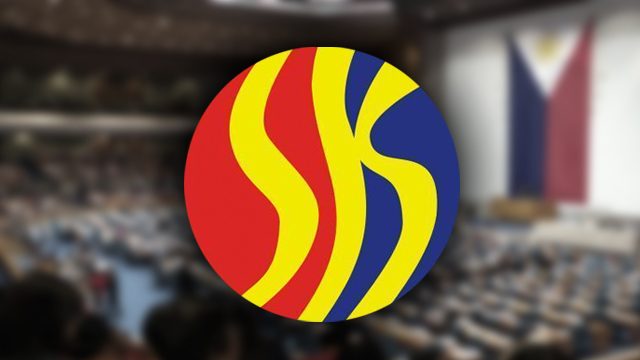
MANILA, Philippines – After a 3-year break, the SK, or Sangguniang Kabataan (Youth Council) is back.
This unique youth institution traces its roots from the Kabataang Barangay (Village Youth), instituted by virtue of Presidential Decree 684, dated April 15, 1975, which provided Filipino youth with a means and an “ample opportunity to express their views.”
What came before
PD 684 instituted barangay youth officials composed of a chairman and 6 members, aged 15 to 18, chosen by their peers.
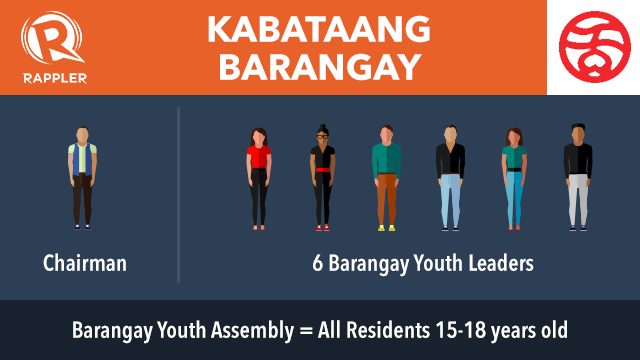
Later amended by PD 935, PD 1102, other presidential decrees, and Batas Pambansa 337 in 1983, the Kabataang Barangay was suppressed during the presidency of Corazon Aquino until the enactment of Republic Act 7160, the Local Government Code of 1991.
Nepotism and dynastic politics were issues at its inception, with no less than the president’s daughter, Imee Marcos, serving as National Chairman of the Kabataang Barangay.
At an open forum at the Pamantasan ng Lungsod ng Maynila (University of the City of Manila) in August 1977, Archimedes Trajano, a student of the Mapua Institute of Technology, questioned this arrangement, and raised the issue of human rights violations. He was forcibly removed from the event by security personnel, and was found dead in the streets of Manila a few weeks later, his body showing marks of torture.
The Local Government Code of 1991
With the new Local Government Code, the Sangguniang Kabataan (Youth Council) was reinstituted with a chairman and 7 council members, aged 15 to 21 years on election day, and elected at large by the youth in the community aged 15 to 21 years old. A secretary and treasurer were appointed by the SK chair from the members of the youth council.
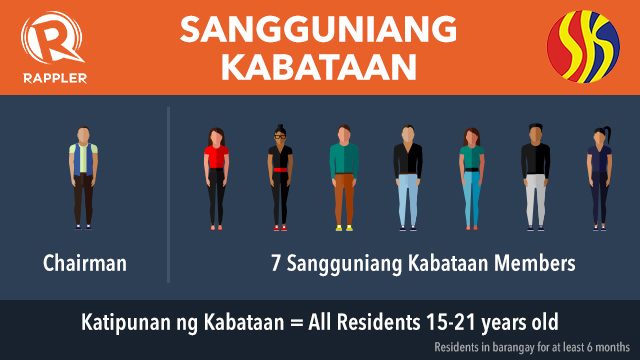
The youth in the community aged 15 to 21 years of age were also constituted into the Katipunan ng Kabataan (Youth Assembly), which was mandated to convene at least quarterly, “to decide upon important issues affecting the youth of the barangay.”
Similar issues of nepotism arose with this new entity, with some SK Chairmen and SK Councilors having blood ties to incumbent local and national officials. Allegations of corruption were also present, particularly during the elections for municipal or city president of the SK Federation (SK Federation Presidents at the Municipal and City level become members of the Municipal or City Council).
Questions on their ability to handle large amounts of money and capability to enter into contracts were also raised, with failures to convene the Katipunan ng Kabataan as required by law, absenteeism from meetings, and a lack of transparency with financial transactions being some of the complaints. The Sangguniang Kabataan as an institution was also scored for having unsustained high-publicity and low-impact youth projects such as sports leagues, tree-planting, and youth social engagements.
Task Force on Youth Development
Prorogued once more in 2013 by virtue of Republic Act 10632, signed into law by President Aquino on October 3, 2013, as well as by Republic Act 10656 which postponed the Sangguniang Kabataan elections to the last Monday of October, 2016, youth concerns were relegated to a little-known entity.
In the interim, an 8-member Task Force on Youth Development, ostensibly nominated by youth organizations in the barangay, as well as by the Katipunan ng Kabataan (Youth Assembly) and appointed by the punong barangay (village chairman) took charge over all community youth concerns and advocacies, as well as over the SK budget, which comprises 10% of the Barangay General Fund.
Despite calls for reform, with some for outright abolition, many remained hopeful that the SK would live up to its promise of empowering the youth.
The Sangguniang Kabataan Reform Act of 2015
With the enactment of Republic Act 10742 on January 15, 2016, the SK received a new lease on life.
It retains the Sangguniang Kabataan (youth council) of one chairman and seven members, who must be aged 18 to 24 at the day of the election, elected at large by the youth resident in the community. Each elected SK official has a 3-year term.
A secretary and a treasurer from the youth of the community are also appointed by the SK Chair, with the approval of a majority of the Sangguniang Kabataan. They serve coterminus with the SK Chair.
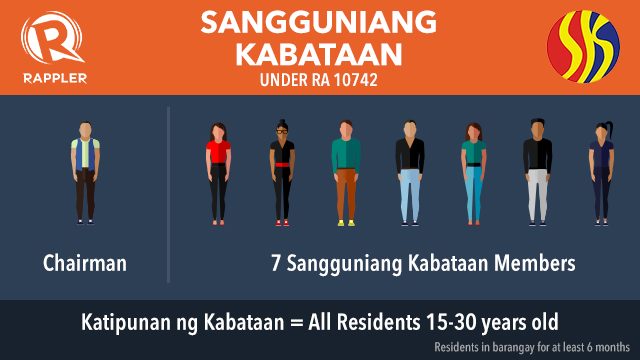
The Katipunan ng Kabataan (Youth Assembly) expands its membership to include all youth of 15 to 30 years of age, and living in the community for at least 6 months. Instead of being required to meet at least quarterly (as mandated since 1991), the youth assembly is now only mandated to meet once every 6 months, and to review the annual performance and financial reports of the Sangguniang Kabataan.
Section 10 of this Act includes an anti-dynasty provision, making it the first law to comply with Article II, Section 26 of the Constitution. As part of the qualifications of elective SK officials, it requires that they not be related within the second degree of affinity or consanguinity of any incumbent national, regional, or local elected official at the city, municipality, or barangay level.
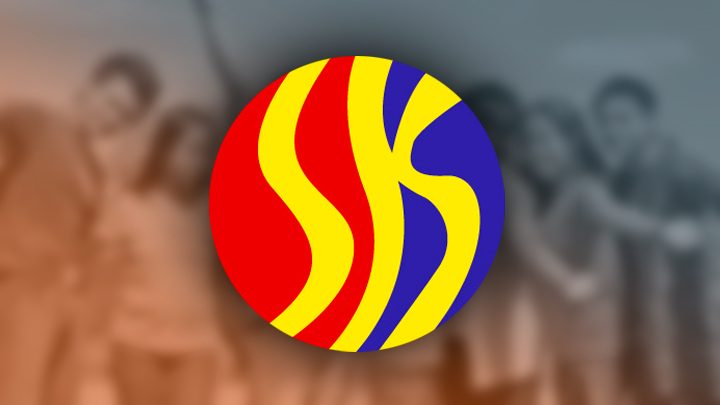
Each province, city, and municipality now has a Local Youth Development Council, which is required to meet every 3 months, composed of representatives of youth and youth-serving organizations within their jurisdiction of the local government unit, who are mandated to assist in the planning and implementation of plans and programs of the Sangguniang Kabataan.
Each province, city, and municipality is also required to create a Youth Development Office, with paid staff, to serve as a focal point and to provide support.
Hope in the youth
During the deliberations on the SK reform bill, National Youth Commission member Jose Sixto Dantes III said that “(Fixing the SK) is a call to revitalize the Sangguniang Kabataan as a viable force for youth development, service, and participation.”
With the structure in place, all the SK needs now are the young people to lead this change.
NYC Chairperson Gio Tingson hailed the law, noting that “a new era for youth leadership has come.”
“Our legislators ensured that the law was not left with a token approval. Given the anti-dynasty clause and the training fund, there are now more opportunities to empower our youth leaders.”
What are your thoughts on these new developments? Tell us on X! – Rappler.com
Youth Image behind SK logo is from Shutterstock.
Add a comment
How does this make you feel?
There are no comments yet. Add your comment to start the conversation.